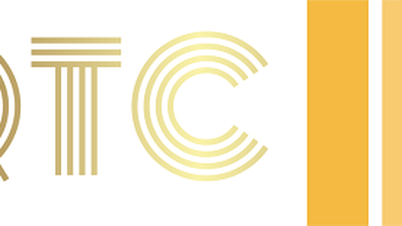"Strange" benchmark scores because each school has its own admission score calculation formula
After the Ministry of Education and Training announced the score distribution of exam subjects, many experts commented that university admission scores based on high school graduation exam scores this year will tend to decrease, especially in majors that are considered based on combinations of Math and English.
However, when the benchmark scores were announced, many people were surprised because the benchmark scores of many schools were "sky high". Some majors even reached 30, although the whole country only had 9 candidates with the absolute score of 30/30. On the contrary, in some schools that always led the benchmark scores in previous years, this year there was a downward adjustment compared to last year, especially in groups such as D01, D07 or A01...
Many people are concerned about the "paradox" of benchmark scores: "Top schools drop to the lower group, while schools in the lower group jump to the top overnight."

Explaining this, the head of admissions at a northern school said that this year's "strange" admission scores are due to each school having its own admission score calculation formula. For example, some schools double the scores for Math or English and convert them to a 30-point scale. These schools will have low admission scores this year because the average scores for Math and English are both low.
In addition, the conversion scale of foreign language scores of schools is also different. There are schools that convert international foreign language certificates into English scores quite "easily", for example, 5.0 IELTS has been converted into 10 English points. Meanwhile, at many schools, to convert into 10 points, candidates need to achieve 7.0-8.0 IELTS.
In addition to converting international language certificate scores "very beneficially" like this, candidates also get many types of bonus points added to their high school graduation exam scores.
"Converting foreign language certificates to high scores is already beneficial for candidates compared to the difficulty of this year's exam, but some schools also add bonus points. Thus, schools are calculating scores twice for the same type of certificate.
This causes inflation of high school graduation exam scores, even leading to a candidate applying for a high school graduation exam with 22 points at one school, but applying to another school with 26 points. Or a candidate taking the high school graduation exam with 23 points passes the 25-point major because of 3 bonus points, while a candidate who scored 24 points fails because of no bonus points," he said.
Another reason stems from the equivalence conversion. This leader said that although in theory, equivalence conversion between methods is very good, ensuring fairness for groups of candidates, currently each school has a different way of implementing the conversion formula, causing many problems and creating a "complicated" matrix.
For example, some schools give more priority to transcripts, so they will have an equivalent conversion method that is convenient for that method. Therefore, there are schools where the gap between transcript scores and high school graduation exam scores is about 4-5 points, but there are schools where the gap is only about 1 point.

“Therefore, comparing the admission scores of schools this year is not appropriate. The fact that a candidate has a ‘pure’ admission score equal to the high school graduation exam score and achieves 27-28 points this year is already very high. Meanwhile, a candidate has a high admission score thanks to conversion, the bonus points may not accurately assess the candidate's ability,” he said.
It is not possible to compare benchmark scores between universities.
Sharing the same view, Associate Professor Dr. Nguyen Phong Dien, Vice President of Hanoi University of Science and Technology, said that it is not advisable and impossible to compare this year's benchmark scores between universities. The reason is because the benchmark scores are determined based on admission scores instead of pure exam scores.
“The scores are calculated according to the formula set by autonomous schools, with bonus points, priority points, even coefficients, talent points, foreign language certificate points, etc., so there are many variations that cannot be compared,” he said.
In addition, there are currently many admission methods with a variety of starting points such as: High school graduation exam scores, ability assessment exams, thinking assessment, VSAT, SAT, A Level... Schools must convert all types of admission benchmark scores to a scale (usually a scale of 30, using a base combination of high school graduation exam scores as the standard). Therefore, according to Mr. Dien, purely comparing admission benchmark scores between schools is baseless.
The head of the training department of another university also said that for this year's admission, the benchmark score depends on each school's conversion method. Mechanically comparing admission scores between schools to make judgments about input quality may not be accurate.
For example, there are schools that use many methods, when converted to equivalent, the benchmark score according to the high school graduation exam score method may be higher. Meanwhile, at some schools, such as schools in the Health sector, which are only based on the high school graduation exam results, there is no conversion between methods, and the benchmark score may even decrease in many schools.
“Therefore, it is impossible to compare the 30 points of this school as being 'better' than the 26 points of another school. That is a lame comparison,” he said.

Source: https://vietnamnet.vn/khong-the-so-sanh-diem-chuan-cua-truong-nay-voi-truong-khac-2435981.html






![[Photo] Multi-colored cultural space at the Exhibition "80 years of the journey of Independence - Freedom - Happiness"](https://vphoto.vietnam.vn/thumb/1200x675/vietnam/resource/IMAGE/2025/8/26/fe69de34803e4ac1bf88ce49813d95d8)
![[Photo] Hanoi: Authorities work hard to overcome the effects of heavy rain](https://vphoto.vietnam.vn/thumb/1200x675/vietnam/resource/IMAGE/2025/8/26/380f98ee36a34e62a9b7894b020112a8)


































































































Comment (0)